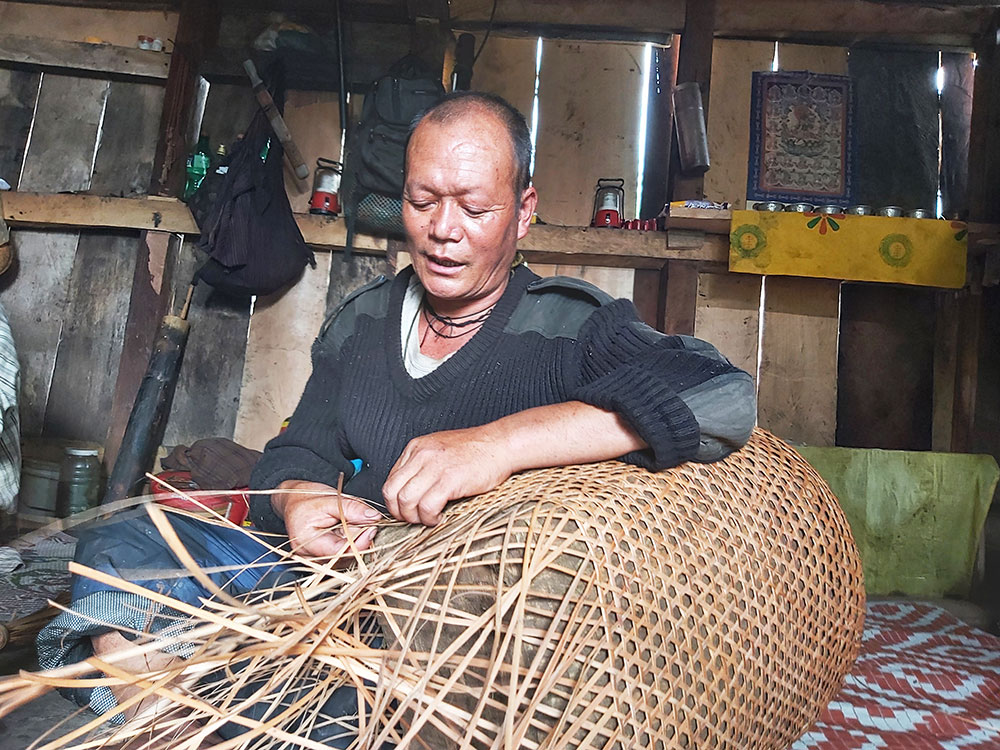Nim Dorji | Trongsa
Tshazo (bamboo craft) one of the main sources of income for the people of Phumzur, a Monpa village, is disappearing.
Only a few elders practice tshazo. This, according to the people, was due to a lack of raw materials and the younger ones not showing interest in the craft.
“If the elderly people are not there, the art will not be there,” a villager said.
Sonam Tshering, 53, continues weaving bamboo products despite many challenges. He has to walk around a day to collect raw materials in the leech-infested jungle. “It’s what puts off our young ones.”
Sonam Tshering said that he cannot do any other work besides bamboo weaving. His main customers are pilgrims visiting the pilgrimage sites in his village.
The abundance of cheap imported substitutes for their hand-made products in the market is the main challenge to their business.
The villagers said that if they could afford they would buy the imported goods from the market rather than struggling in the forest. “But we don’t have the money.”
As their village falls under the park area they are restricted to collect raw materials.
A villager, Bago said that if we plant a bamboo plant near our house it takes two to three years to grow. “All children in the community go to school and there is no one to learn the art.”
Jangbi tshogpa Lhajay said that tshazo was the main source of income for the Monpa community in the past. “All the villagers depended on this trade.”
Most of the villagers choose easier means to earn. They work as daily wage earners at the community contract work sites, and other construction sites nearby.
He said that it takes around five days to make a lakchu (a small bamboo basket) from collecting the raw material until the product is complete. It barely fetches Nu 1,000.
People felt that it’s not profitable if they only rely on bamboo art.
To keep the culture alive, they want to propose to the gewog administration to train the students in Jangbi school on bamboo work once every week.
Langthel Gup said that villagers formed a group but it did not work well due to some internal conflict among the members.
We are discussing with the relevant offices to revive the tshazo and keep the art alive in the Monpa community.
Monpas are believed to be the native inhabitants of the country.
Edited by Tshering Palden


